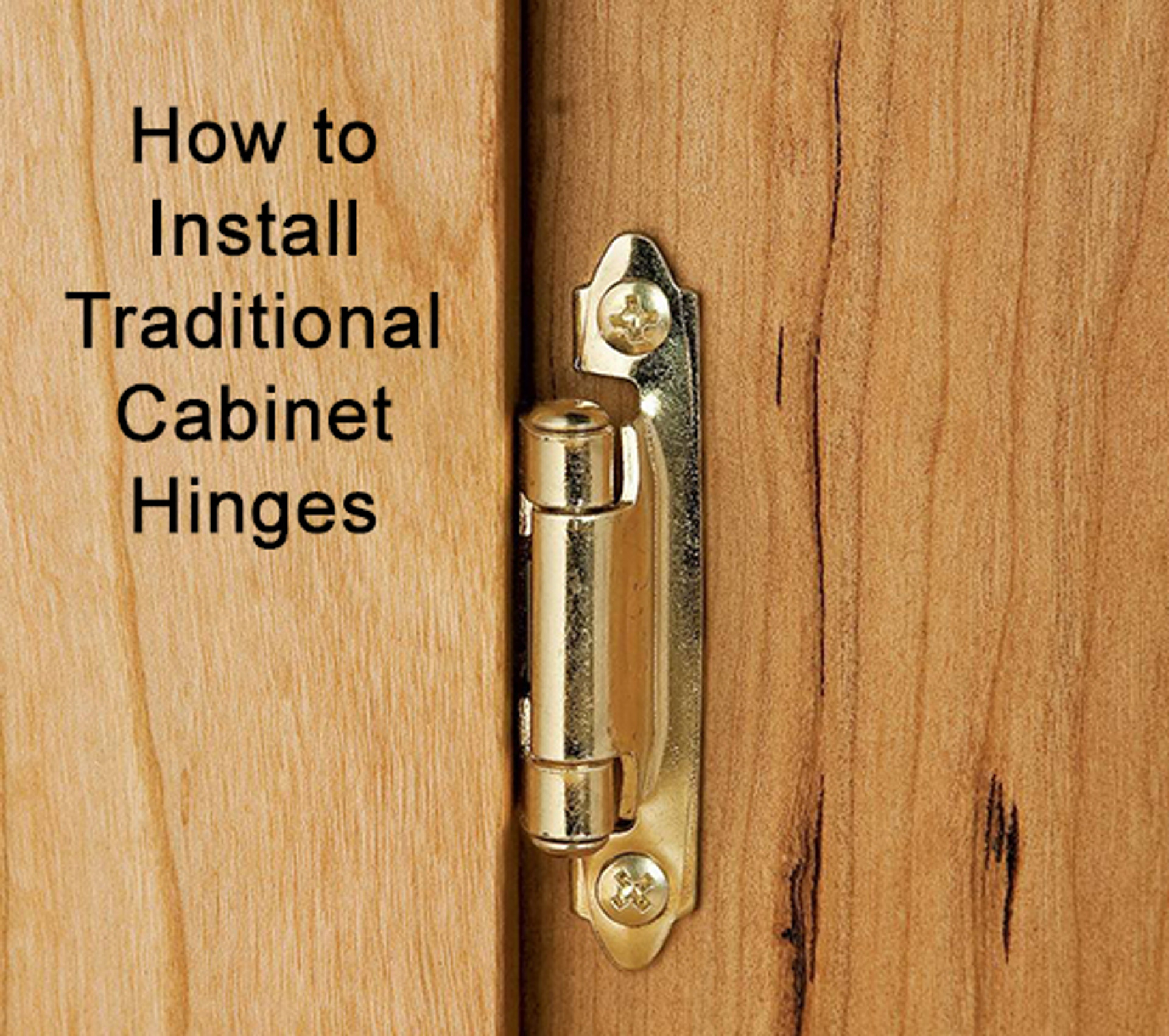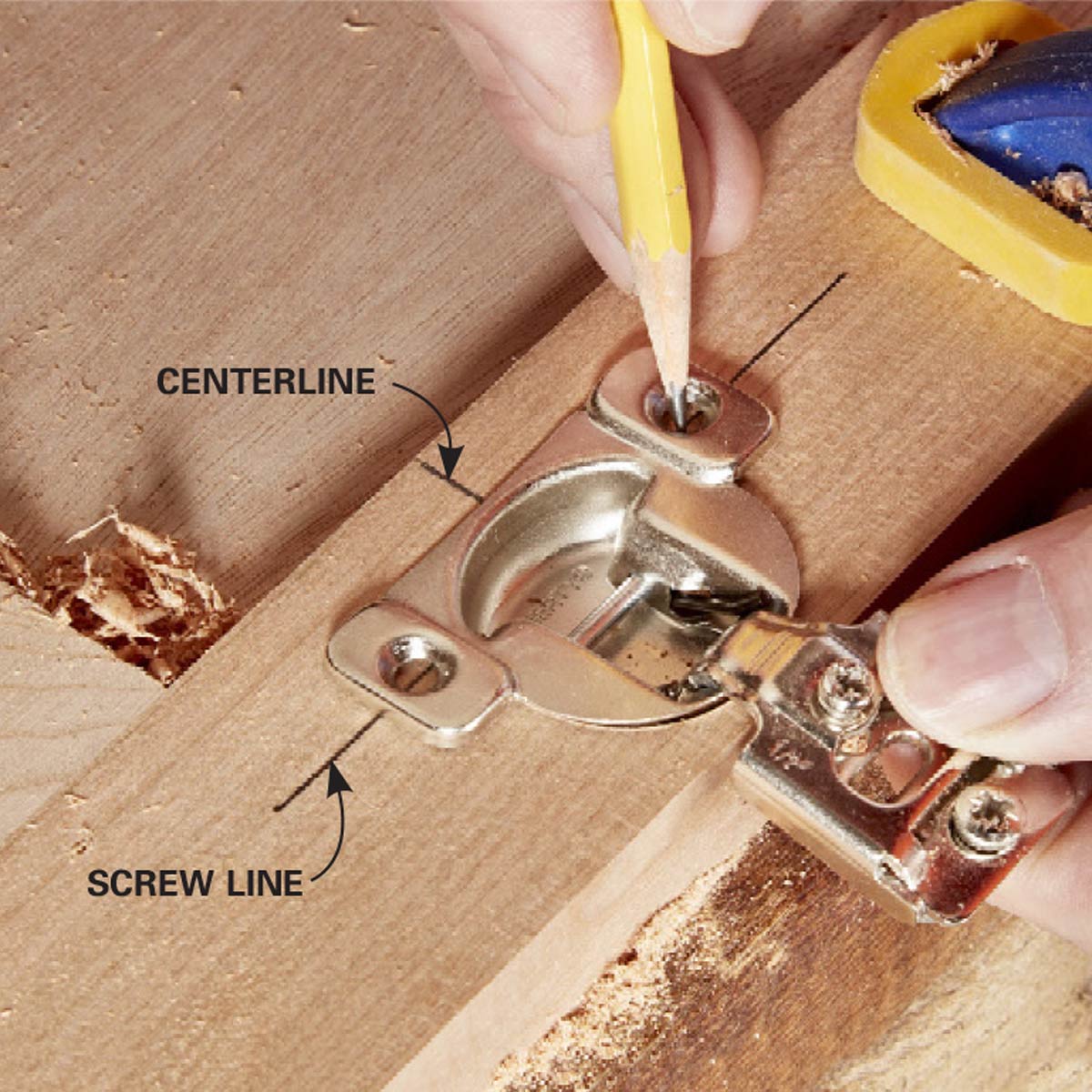Choosing the Right Hinges: How To Put Hinges On A Cabinet Door

The hinges you choose for your cabinet doors play a crucial role in their functionality and aesthetics. Selecting the right type of hinges ensures smooth opening and closing, while complementing the overall design of your cabinets.
Types of Cabinet Hinges
Cabinet hinges come in various styles, each designed for specific applications.
- Butt Hinges: These are the most common type of hinges, featuring a simple, rectangular design with two leaves that fold together. They are suitable for both inset and overlay doors, providing a classic and versatile option.
- Inset Hinges: As the name suggests, inset hinges are designed for doors that sit flush with the cabinet frame. These hinges are typically concealed within the cabinet, offering a clean and minimalist look.
- Overlay Hinges: Overlay hinges are used for doors that overlap the cabinet frame. These hinges are visible when the door is closed, adding a decorative element to the cabinet.
Choosing the Right Hinge Type
The type of hinge you choose depends on the style of your cabinet doors and the desired installation method.
- Inset Doors: Inset doors, which are flush with the cabinet frame, require inset hinges for a seamless look. These hinges are typically concealed within the cabinet, creating a clean and modern aesthetic.
- Overlay Doors: Overlay doors, which overlap the cabinet frame, can use either butt hinges or overlay hinges. Butt hinges offer a classic look, while overlay hinges add a decorative element to the cabinet.
Determining Hinge Size and Quantity
The size and quantity of hinges you need will depend on the weight and dimensions of your cabinet doors.
- Hinge Size: The size of the hinge should be proportional to the weight and size of the door. Larger doors typically require larger hinges for adequate support.
- Hinge Quantity: The number of hinges needed for a door depends on its weight and size. For lighter doors, two hinges may suffice. However, heavier doors may require three or more hinges for stability.
Preparing for Installation

Now that you’ve chosen the right hinges for your cabinet door, let’s get ready for installation. This step is crucial for ensuring a smooth and successful hinge installation process. We’ll cover the tools and materials you’ll need, as well as how to accurately mark the hinge locations on your cabinet door and frame.
Tools and Materials
Having the right tools and materials is essential for a successful hinge installation. These items will make the process easier and ensure a professional-looking result.
- Screwdriver: A Phillips head screwdriver is ideal for driving the hinge screws.
- Drill: A cordless drill with a variable speed setting will make drilling pilot holes easier and more precise.
- Drill Bits: You’ll need drill bits that are slightly smaller than the diameter of your hinge screws. A set of common drill bit sizes will come in handy.
- Measuring Tape: Essential for accurately marking the hinge locations.
- Pencil: For marking the hinge locations on the door and frame.
- Hinge Template: Optional, but highly recommended, for accurate hinge placement. These templates are typically made of plastic or metal and have markings for different hinge types.
- Level: Ensure your hinges are installed straight and level.
- Hinge Screws: Make sure to use the correct length screws for your hinges and cabinet material.
Marking Hinge Locations
Precisely marking the hinge locations on the cabinet door and frame is essential for a perfect fit. There are two common methods: using a hinge template or measuring and marking manually.
- Using a Hinge Template:
- Position the template on the cabinet door where you want the hinge to be located. Ensure the template is level and flush with the door edge.
- Use a pencil to trace the template’s markings onto the door. This will mark the screw hole locations for the hinge.
- Repeat steps 1 and 2 on the cabinet frame, ensuring the hinge locations on the door and frame align.
- Measuring and Marking Manually:
- Decide on the desired hinge placement and measure the distance from the top and bottom edges of the door.
- Transfer these measurements to the cabinet frame, ensuring they align with the door measurements.
- Mark the hinge screw hole locations on the door and frame using a pencil. You can use a ruler to ensure the markings are straight and evenly spaced.
Drilling Pilot Holes
Drilling pilot holes is a crucial step before installing the hinge screws. This prevents wood splitting and ensures a clean and secure installation.
- Choosing the Right Drill Bit Size: Use a drill bit slightly smaller than the diameter of your hinge screws. This will create a snug fit for the screws and prevent them from stripping.
- Drilling Depth: Drill the pilot holes to a depth that’s slightly shallower than the length of the hinge screws. This will ensure the screws don’t go all the way through the wood and potentially damage the cabinet interior.
- Drilling Slowly and Carefully: Drill slowly and steadily to avoid splintering the wood. Apply light pressure and let the drill bit do the work.
Installing the Hinges

Now that you have your hinges and the cabinet door and frame prepped, it’s time to install them! This is the most hands-on part of the process, but with a little care and precision, you’ll be able to install your hinges like a pro.
Installing the Hinge Plates
The first step is to attach the hinge plates to the cabinet door and frame. This involves marking the locations, drilling pilot holes, and then securing the hinges with screws. Here’s a visual guide:
Image 1: Marking the Locations
* Description: This image shows a person using a pencil to mark the locations for the hinge plates on the cabinet door and frame. The markings should be equidistant from the top and bottom edges of the door and frame, and they should be aligned with each other.
Image 2: Drilling Pilot Holes
* Description: This image shows a person using a drill to create pilot holes for the hinge screws. Pilot holes are essential for preventing the wood from splitting when you drive in the screws. They should be slightly smaller than the diameter of the screws.
Image 3: Attaching the Hinge Plates
* Description: This image shows a person using a screwdriver to attach the hinge plates to the cabinet door and frame. The screws should be driven in straight and flush with the surface of the hinge plate.
Important Tips:
* Use a Level: Ensure the hinge plates are perfectly level and aligned using a level. This will ensure the door opens and closes smoothly.
* Don’t Overtighten: Overtightening the screws can strip the wood or damage the hinge. Use a screwdriver with a good grip and tighten the screws firmly but not excessively.
Aligning the Hinges
After attaching the hinge plates, it’s crucial to align them correctly to ensure the door opens and closes smoothly. Here’s how:
* Check the Gap: Ensure there’s a consistent gap between the door and the frame. The gap should be even across the entire door.
* Adjust the Hinges: If the door is misaligned, you can adjust the hinges to correct it. Most hinges have screws that allow you to move the hinge plate slightly. You can use a screwdriver to adjust these screws and align the door.
Important Tip:
* Don’t Force It: If the door is severely misaligned, don’t try to force it. This can damage the hinges or the door. Instead, consult a professional.
Preventing Stripping the Screw Holes, How to put hinges on a cabinet door
Stripping the screw holes is a common problem when installing hinges. Here are some tips to prevent this:
* Use Pilot Holes: As mentioned earlier, drilling pilot holes before driving in the screws is essential for preventing the wood from splitting.
* Use the Right Size Drill Bit: Ensure the drill bit is slightly smaller than the diameter of the screw.
* Use a Screwdriver with a Good Grip: A screwdriver with a good grip will help prevent the screw from slipping and stripping the hole.
* Don’t Overtighten: Overtightening the screws can strip the wood or damage the hinge. Use a screwdriver with a good grip and tighten the screws firmly but not excessively.
How to put hinges on a cabinet door – Putting hinges on a cabinet door is like, totally basic DIY stuff, right? But if you’re feeling extra crafty, you could totally make your own shoe cabinet! Check out this awesome tutorial for a diy wooden shoe cabinet – it’s like, totally rad! Once you’ve got your cabinet built, you’ll need to know how to put hinges on those doors.
It’s like, a total game-changer for keeping your shoes organized and looking fly.
Okay, so you’re trying to put hinges on a cabinet door, right? It’s pretty basic, but if you’re feeling extra fancy, you could totally rock a chicken wire cabinet door! Chicken wire doors are like, totally trending right now.
They’re super cool and add a little somethin’ somethin’ to your space. But anyway, back to the hinges. Just make sure you’re using the right size screws and you’re good to go.
